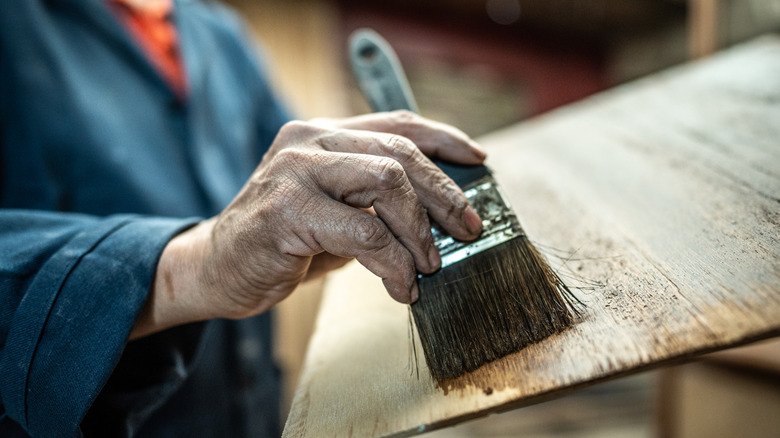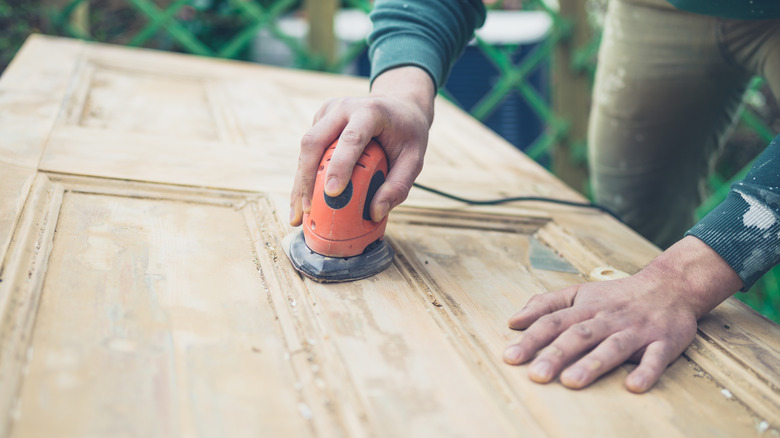The Huge Mistake We're Begging You To Stop Making While Stripping Wood
We may receive a commission on purchases made from links.
Imagine scoring a stunning vintage dresser at a flea market: Given how the years of paint have left it looking quite shabby, you're excited to restore it. Or, maybe you're finally pushing through with refurbishing your wooden furniture that has been sitting in your storage space for years. But even if you've mastered the art of woodworking, all of your efforts may be derailed by committing the huge mistake of sanding before stripping the wood.
Sanding may seem like the logical first step to tackle layers of old paint or finish when you're doing any wood restoration project. But it's a premature move that can cause more harm than good. So, you're just setting yourself up for an exhausting process if you sand before removing the top layers of your wooden furniture. The reason for this is that sandpaper cannot penetrate thick layers of paint or varnish, and proceeding to do this before removing these layers can lead to headaches that are far beyond necessary.
Why you should stop sanding before stripping wood
Sanding before stripping wood is not only inefficient — it can also cause damage to the wooden furniture that you want to restore. The heat generated by aggressive sanding can melt old finishes, which can turn into a sticky mess. But beyond inefficiency, sanding first can erase or distort delicate details in your old wooden furniture. It can grind paint particles into the wood grain, which in turn could prevent a clean and smooth surface. Your wooden furniture might end up needing more repair than planned.
So before using an electric sander, first safely remove the old wood finish. Chemical strippers are a popular choice since these can break down layers of paint and varnish without damaging the wood beneath. You can also opt for an eco-friendlier alternative, such as the Max Strip Paint and Varnish Stripper, which doesn't contain harsh chemicals. Regardless of your choice, what's important here is to just get a stripper that actually suits your needs and apply it depending on the manufacturer's instructions. Once done, scrape the softened finish with a putty knife or any scraper tool.
You can then proceed to sanding once you're done removing the finish, and move forward with your restoration project. This approach ensures that your furniture's wooden beauty is given the spotlight without causing unnecessary — and perhaps costly — damage. So, don't let the excitement of restoring lead you astray from the right process. By avoiding this mistake of sanding wood projects before stripping, you'll definitely end up with a finish you're proud of!

